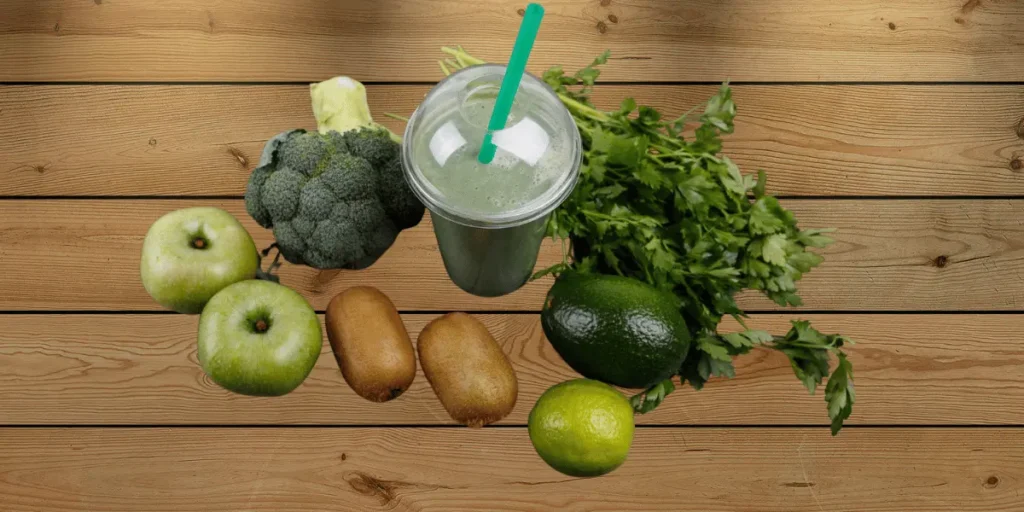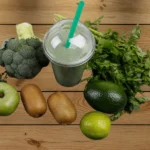Juicing leafy greens like kale and spinach can be challenging initially, but it’s possible with the right approach. A low-speed cold press or masticating juicer helps maximize extraction while preserving their potent nutrients and detoxifying effects.
Start by compacting the leaves and pair them with fruits like oranges or apples or vegetables like carrots and cucumbers, which have high water content to balance the naturally sweet and tasty flavours. For large portions, adding dense greens with fruits can help create homemade juices that are both healthy and delicious.
Whether you’re a beginner or a juicing pro, these preparation tips and the best types of juicers can make juicing different ingredients, like leafy greens, more manageable and enjoyable.
Can You Juice Leafy Greens?
Yes, leafy greens like spinach and kale can be juiced using a masticating juicer or blender, ensuring maximum extraction and nutrient retention. Pair them with water-rich produce like cucumber or oranges for a smooth, flavorful juice.
6 Tips for Juicing Leafy Greens
1. Pick the Best Juicer for Leafy Greens
Juicing leafy greens needs a special type of juicer because not all machines can extract every drop of liquid from these delicate plants. A twin gear or masticating juicer works best, as it uses dual, stainless steel gears with razor-sharp teeth that interlock and rotate to chew through plant cell walls, ensuring maximum juice extraction.
These high-end triturating models from premium brands like Kuvings and Tribest are excellent for leafy green performance but have a pricier tag. Suppose you’re looking for something more compact. In that case, a single auger juicer with a slow motor offers a sleek design and reliable functionality.
Companies like Hurom, Omega, and Kings produce top-notch varieties. Still, they often have smaller feed chutes, so extra prep work is needed. If you’re juicing Beetroot Juice Without Sugar, these juicers work well, too, as they extract rich flavours while keeping nutrients intact.
2. Tightly Roll Stubborn Spinach
Juicing leafy green vegetables like spinach and kale can be tricky because their leaves are soft and light. To make the process smoother, tightly roll them into a cylinder before placing them into the juicer.
This helps prevent clogging and ensures the juice is extracted correctly. If your chute is small or uneven, a tightly packed roll will stop the greens from getting stuck or causing a jam. A hassle-free way to improve extraction is by slicing the leaves into thin strips like noodles, allowing the juicer to suck them in more efficiently. If the feeding tube is broad, lightly press the greens down with a tamper for smooth flow.
For even better results, fan out batches of long leaves and feed them slowly to avoid uneven juicing. Since these greens are soft, a slowly moving juicer will handle them better and extract every drop without wasting nutrients. Unlike fibrous fruits, this is why you can’t juice a banana—it lacks the water content needed for proper extraction.
3. Use the Stems
Many people throw away thorny stems, but they are okay to use in juice because they hold a lot of nutrition. Instead of letting them go to waste, add them to your juicer for extra benefits.
When working with leafy greens like kale or chard, there is no need to separate the stem from the leaf as you would when cooking or eating them. A good juicer can quickly process the entire plant, extracting all its nutrients into your juice while reducing waste.
4. Alternate Greens with Water-Rich Produce
When juicing leafy greens, it’s wise to mix them with high water-content fruits and veggies like cucumber, oranges, pineapple, and grapes. This trick helps flush out any clinging particles and residual mashed-up pulp that could lead to buildup in the juicer strainer screen.
By strategically adding these water-bursting ingredients before and after your dense greens, you can prevent premature clog formation and keep your machine running longer without stopping.
Plus, this method allows you to rinse out previous bits of particulate while maximizing nutrient extraction. It’s a win-win—less waste stuck behind and longer continuous sessions for juicing.
5. Soak Greens in Water
Soaking kale and chard in water for a few minutes before juicing makes a big difference. It helps the leaves absorb fluid, softening their rigid cell walls and making them easier to process in the juicer.
As the swelling expands, tiny cracks in the cells release more juice as the juicer gears grind them up. To boost this effect, adding a bit of lemon juice or vitamin C powder to the soak can help break down the fibres even faster.
Remember to dry the soaked leaves before juicing so excess water doesn’t dilute the final juice. This trick works exceptionally well for fibrous greens and ensures you get the most out of your amount of produce.
6. Add Lemon to Spinach Mixes
Adding lemon juice to spinach before juicing helps break down its rigid cell walls, just like meat tenderizers do with meat fibres. The acidity from lemons, limes, oranges softens the leaves, allowing more fluid to be squeezed out when the juicer gears crush them.
Use at least 1/2 lemon wedge per cup of spinach for maximum effect. This also prevents clumping and sticky pulpy masses from forming around juicer parts, making juicing smoother and more efficient. The acid in smaller lemon bits stops the gluey texture. It reduces clogs, ensuring an easy process no matter how you chop your stubborn greens.
FAQ’s
Q: Are Leafy Greens Good for Juicing?
Leafy greens like spinach, kale, and romaine lettuce are full of nutrients and low in calories, making them great for juicing. Adding cucumber, celery, or zucchini with their high water content helps keep your juice hydrating and refreshing.
Q: Can You Put Leaves in a Juicer?
Roll small leafy greens into a cylinder and feed them into your juicer slowly. Depending on the type, it may suck them in or need a push—either way, go easy and add a bit at a time.
Q: Can I Put Spinach in a Juicer?
Yes, spinach is a green leafy vegetable rich in nutrition, and juicing makes its nutrients more available in a healthy, tasty drink. Use a juicer or blender—if you’re looking for a recipe that tastes great, this one is chockful of benefits.
Conclusion
Juicing leafy greens is a fantastic way to unlock their nutrients and enjoy a healthy, refreshing drink. Whether you’re using a masticating juicer or a blender, the proper techniques—like rolling spinach, soaking kale, and pairing greens with water-rich produce—can make the process smoother and more effective.
You can create delicious, nutrient-packed juices at home by choosing the best juicer for the job, maximizing extraction, and minimizing waste. No matter your experience level, these tips will help you get the most out of your green juice recipes, making juicing easy and enjoyable.







